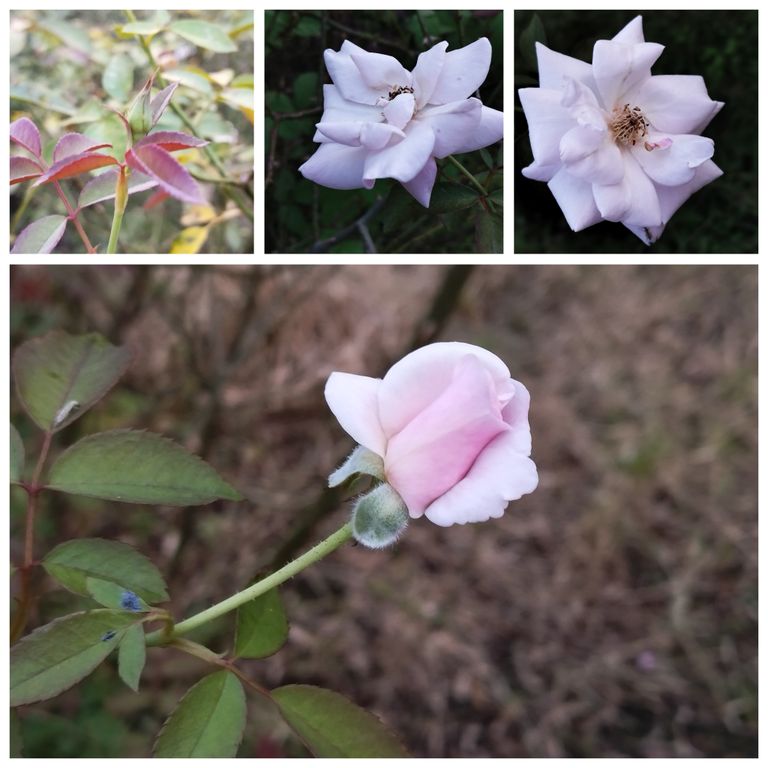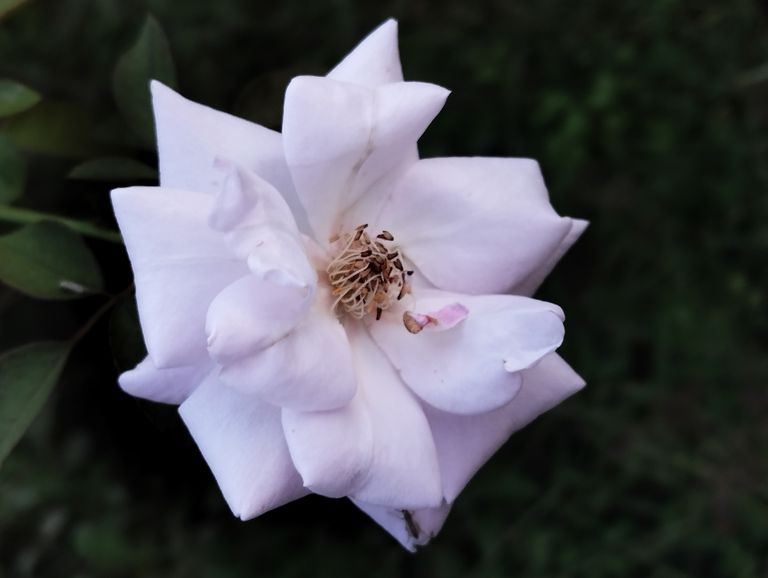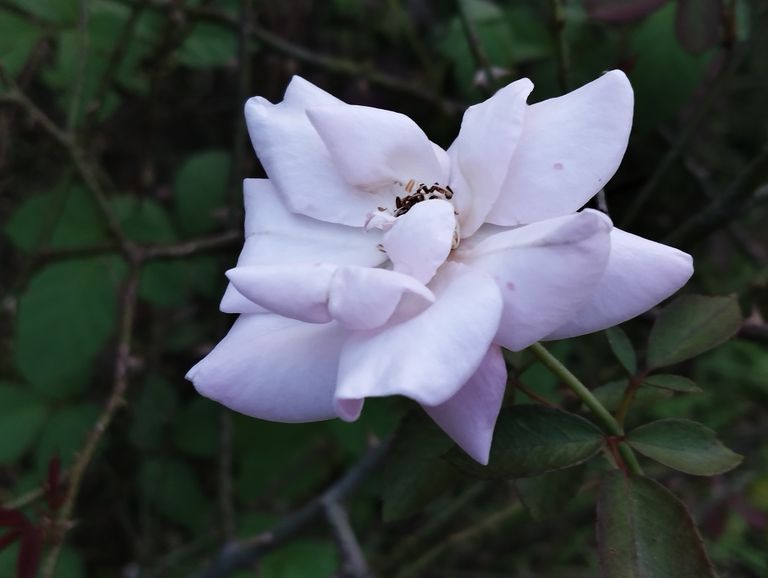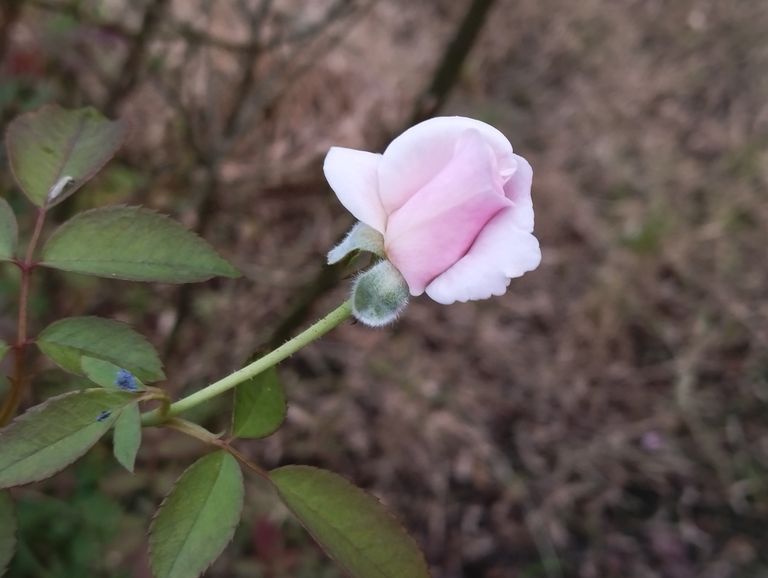
How to Grow Pink Roses: A Complete Guide.
Roses have been a symbol of love, beauty, and elegance for centuries, with pink roses, in particular, carrying a message of grace, admiration, and joy. Growing pink roses in your garden can add charm and beauty to your surroundings. However, successfully cultivating roses, including pink varieties, requires knowledge, patience, and dedication. In this guide, we will walk you through the process of growing and caring for pink roses, from selecting the right variety to ensuring a healthy bloom.
- Selecting the Right Pink Rose Variety
The first step to growing beautiful pink roses is selecting the right variety. There are numerous types of pink roses available, each with its unique characteristics. Some popular varieties include:
Hybrid Tea Roses: Known for their large blooms and long stems, these are perfect for cutting.
Floribunda Roses: These produce clusters of blooms and are ideal for creating a colorful display.
Climbing Roses: These roses are perfect for growing on trellises or fences.
Miniature Roses: Compact and great for container gardening, miniature roses also come in pink varieties.
When selecting a variety, consider the growing conditions in your area. Check the USDA hardiness zone for your location and choose a rose that is suited to that climate. Additionally, consider the amount of space you have in your garden.
- Preparing the Soil
Roses thrive in well-draining, fertile soil. Before planting your pink roses, it’s important to prepare the soil properly. Follow these steps:
Soil Testing: Roses prefer slightly acidic soil with a pH of 6.0 to 6.5. You can test your soil's pH using a home kit or by sending a sample to a local extension office.
Amending the Soil: If your soil is too alkaline, you can lower the pH by adding sulfur or composted organic matter. Conversely, if the soil is too acidic, add lime to increase the pH.
Improving Drainage: If your soil tends to hold water, consider adding sand or compost to improve its drainage. Roses do not like sitting in waterlogged soil, as this can lead to root rot.
Fertilizing the Soil: Mix in well-rotted compost or manure to enrich the soil with nutrients before planting. A balanced rose fertilizer can also be applied to promote healthy growth.
- Planting the Pink Rose
Timing and location are key when planting roses. Here’s how you can ensure a successful planting process:
Choosing the Right Spot: Roses require at least 6 hours of direct sunlight daily. Choose a sunny spot in your garden with good air circulation to prevent fungal diseases.
Planting Time: The best time to plant roses is in early spring or fall when the weather is cooler. If planting bare-root roses, soak the roots in water for several hours before planting.
Digging the Hole: Dig a hole that is about 18 inches wide and deep enough to accommodate the root system. The bud union (the swollen part where the rose is grafted) should sit just above the soil level.
Planting: Place the rose in the hole and spread out the roots. Backfill the hole with soil, gently firming it down as you go. Water the plant well after planting.
- Watering and Mulching
Once your pink rose is planted, it’s essential to provide adequate water and mulch to encourage healthy growth:
Watering: Roses need regular watering, especially during dry spells. Water deeply at the base of the plant 1-2 times a week, making sure the soil remains moist but not waterlogged. Early morning is the best time to water, as it allows the foliage to dry during the day.
Mulching: Apply a 2-3 inch layer of mulch around the base of the rose bush. Mulch helps retain moisture, suppress weeds, and regulate soil temperature. Organic mulches such as shredded bark or compost work well for roses.
- Pruning and Training
Pruning is essential for maintaining the health and appearance of your pink roses. Proper pruning encourages new growth and more blooms. Here’s how to prune roses:
Timing: Prune your pink roses in late winter or early spring before new growth begins.
Tools: Use sharp pruning shears to make clean cuts, and always sanitize them before and after pruning to prevent disease spread.
Pruning Process: Remove dead, damaged, or diseased canes first. Next, prune back any crossing branches that may rub against each other. For hybrid teas, prune to a height of 18-24 inches. Floribundas and climbing roses can be pruned more lightly, focusing on shaping and removing weak growth.
Training Climbing Roses: For climbing pink roses, tie the canes to a support structure, such as a trellis or fence. This helps the plant grow upward and encourages more blooms along the length of the canes.
- Fertilizing the Roses
Roses are heavy feeders, and to ensure vibrant blooms, you need to fertilize them regularly:
Balanced Fertilizer: Use a balanced fertilizer, such as a 10-10-10 (nitrogen-phosphorus-potassium) mix, every 4-6 weeks during the growing season.
Organic Fertilizer: You can also use organic fertilizers like fish emulsion, compost, or well-rotted manure to provide slow-release nutrients to the plants.
Timing: Begin fertilizing in early spring when new growth appears and continue until late summer. Stop fertilizing about 6 weeks before the first frost to allow the plants to harden off.
- Dealing with Pests and Diseases
Unfortunately, roses are prone to pests and diseases. Here are some common problems and solutions:
Aphids: These small insects can be controlled with insecticidal soap or by introducing beneficial insects like ladybugs.
Black Spot: A fungal disease that causes black spots on leaves. To prevent black spot, ensure good air circulation around the plant and avoid overhead watering.
Powdery Mildew: This appears as a white, powdery substance on leaves. It can be prevented by watering at the base of the plant and ensuring the roses get enough sunlight.
Japanese Beetles: These pests can quickly defoliate a rose bush. Handpick them off the plant or use neem oil to repel them.
- Winter Care
In colder climates, roses need protection during the winter months. Here’s how to protect your pink roses from frost and freezing temperatures:
Mulching: Before the first frost, add an extra layer of mulch around the base of the plant to insulate the roots.
Covering the Plant: In extremely cold regions, you may need to cover your rose bush with burlap or rose cones to protect the canes from harsh winter winds.
Watering: Continue watering your roses until the ground freezes. This helps keep the plant hydrated during the dormant season.
- Harvesting and Enjoying the Blooms
Pink roses bloom from late spring through fall, and once the flowers open, you can begin enjoying their beauty indoors as well as outside:
Cutting Roses: When cutting roses for indoor arrangements, do so early in the morning. Use sharp, clean shears and cut the stems at an angle.
Displaying Roses: Place the cut stems in a vase filled with cool water. Change the water every couple of days to prolong the life of the blooms.
- Conclusion
Growing pink roses may seem challenging at first, but with the right care and attention, you can cultivate beautiful blooms that add elegance to your garden. Remember to choose the right variety, prepare the soil, water regularly, and protect your plants from pests and diseases. With patience and dedication, your pink roses will reward you with stunning blooms for years to come. Whether you’re growing hybrid tea roses for cutting or climbing roses to adorn a fence, the sight of pink roses in full bloom is sure to bring joy to your heart and beauty to your home.


How to Care for Pink Rose Petals: A Comprehensive Guide
Pink roses are a symbol of love, admiration, and gentleness. Their delicate beauty and subtle fragrance make them a favorite among gardeners and flower enthusiasts. However, caring for rose petals, particularly pink ones, requires attention to detail to preserve their softness, fragrance, and appearance. Whether you are growing your own roses or managing freshly picked petals, proper care ensures they remain fresh and vibrant. In this blog, we will delve into the best practices for taking care of pink rose petals and ensuring they retain their charm for as long as possible.
- Understanding Pink Rose Varieties
Before jumping into the care process, it’s important to know that different pink rose varieties may require slightly different attention. Some popular pink rose types include:
Pink Knock Out Roses: Known for their low maintenance and resilience.
Pink Hybrid Tea Roses: Classic long-stemmed roses, often used in floral arrangements.
Pink Climbing Roses: These roses can be trained to grow on trellises or walls, offering a dramatic look. Each of these varieties may have different levels of fragility in their petals, so adjust care techniques based on the type you are growing or handling.
- Harvesting Rose Petals at the Right Time
To care for rose petals properly, start with a healthy flower. Harvest rose petals early in the morning or late in the evening when the air is cooler. This helps preserve the fragrance and freshness of the petals. Avoid picking petals during the hottest part of the day, as heat can quickly dehydrate them.
Steps for harvesting rose petals:
Gently pull the petals from the bloom, taking care not to bruise them.
Place them in a soft, clean container like a basket lined with cloth or paper towels to prevent damage.
Store the petals in a cool, shaded place until you’re ready to use them.
- Preserving Pink Rose Petals
Once you’ve harvested your rose petals, the next step is to ensure their freshness. Here are some effective ways to preserve pink rose petals:
a) Refrigeration
One of the easiest ways to keep rose petals fresh for a few days is by refrigerating them.
Place the petals in an airtight container lined with damp paper towels to maintain moisture.
Store the container in the fridge, but avoid placing it near fruits like apples or bananas, which emit ethylene gas that can cause the petals to wilt faster.
b) Drying Rose Petals
If you want to keep your pink rose petals for a longer period, drying them is a great option. Dried petals can be used in potpourri, crafts, or as natural confetti for celebrations.
Air-drying: Spread the petals out on a flat surface in a single layer. Place them in a cool, dry place with good air circulation. In about 1-2 weeks, the petals will be fully dried.
Oven-drying: For quicker results, place the petals on a baking sheet lined with parchment paper and put them in the oven at the lowest setting. Check them every 15 minutes until they are completely dry.
c) Freezing
Freezing rose petals can preserve their color and softness for longer periods. Lay the petals on a flat tray and freeze them individually before transferring them to a zip-lock bag for longer storage. Use frozen petals for decoration or special occasions.
- Protecting Rose Petals from Environmental Damage
Whether they are still on the plant or freshly picked, rose petals are sensitive to environmental factors like sunlight, humidity, and pests.
a) Sunlight Protection
Excessive direct sunlight can scorch rose petals, causing them to fade or dry out too quickly. If you are growing roses, make sure to plant them in an area where they get morning sunlight but are protected from the harsh afternoon rays.
b) Humidity and Moisture Control
Too much moisture can lead to mold or fungal growth on rose petals. Ensure proper air circulation around rose bushes and avoid watering late in the day, as the moisture can linger overnight, promoting disease. If storing petals, keep them in a dry environment or use silica gel packets to absorb excess moisture.
c) Preventing Pest Damage
Aphids, thrips, and other small insects can cause damage to rose petals. Regularly inspect your plants and remove pests manually or use organic insecticidal soap to prevent infestations. For harvested petals, ensure they are free from pests before storage by gently rinsing them in cool water and drying them completely.
- Enhancing the Fragrance of Pink Rose Petals
While pink roses are naturally fragrant, you can take steps to intensify their scent or make the most of their aromatic qualities. Freshly harvested petals can be steeped in water to create rose water, which can be used in skincare, cooking, or aromatherapy.
Making rose water:
Boil a pot of water and add freshly harvested pink rose petals.
Let the petals steep for 15-20 minutes, then strain the liquid into a container.
Once cooled, store the rose water in the refrigerator and use it within a week.
- Using Pink Rose Petals in Creative Ways
Rose petals, especially pink ones, are incredibly versatile and can be used for more than just decoration. Here are a few creative ways to use your petals:
Floral arrangements: Use the petals to enhance the beauty of bouquets or centerpieces.
Homemade potpourri: Combine dried petals with essential oils, spices, and other dried flowers for a personalized scent blend.
Skincare treatments: Add fresh or dried rose petals to baths, face masks, or scrubs for a luxurious touch.
Edible decorations: Use organic, pesticide-free rose petals to garnish cakes, pastries, or cocktails.
- Caring for Rose Petals Post-Harvest
If you’ve picked fresh pink rose petals for a special occasion or project, you’ll want to maintain their beauty until they’re ready to be used. Here’s how:
Handle with care: Rose petals bruise easily, so avoid rough handling. When transporting them, use a soft cloth or paper towel to cushion the petals.
Avoid moisture: Don’t let the petals get wet after they’ve been harvested, as this can cause them to become soggy and prone to mold.
Keep them cool: Store the petals in a cool environment, and if necessary, lightly mist them with water to keep them from drying out completely.
- Troubleshooting Common Issues
Even with the best care, you might encounter some challenges with your pink rose petals. Here are some common problems and how to address them:
Wilting petals: If your petals are wilting too quickly, ensure they are not being exposed to direct sunlight or excessive heat. Mist them lightly with water to restore some moisture.
Discoloration: Petals can discolor due to overexposure to sunlight or improper storage. Keep them in a cool, dark place to retain their color.
Mold growth: If petals are stored in a damp environment, they may develop mold. Always make sure they are completely dry before storage, and use silica packets to absorb any excess moisture.
Conclusion
Caring for pink rose petals is a rewarding process that requires attention to detail and patience. By understanding the needs of rose petals and taking proactive steps to preserve their beauty, you can enjoy the elegance and fragrance of pink roses for extended periods. Whether you're using them for decoration, skincare, or simply as a fragrant reminder of nature’s beauty, proper care will ensure your pink rose petals remain vibrant and lovely.
Happy gardening and enjoy the timeless allure of pink roses.

Health Benefits of Rose Petal Tea
Rose petals, known for their beauty and fragrance, have been used for centuries in various cultures, not just as decorative flowers but also for their medicinal properties. One of the most popular uses of rose petals is in tea. Rose petal tea has a long history in traditional medicine, particularly in Asia and the Middle East, and is renowned for its numerous health benefits. This herbal tea, made from dried rose petals, is packed with vitamins, antioxidants, and essential compounds that contribute to overall well-being. Let’s explore the key benefits of rose petal tea.
- Rich in Antioxidants
Rose petals are packed with antioxidants, particularly polyphenols, which help protect the body from oxidative stress. Antioxidants play a crucial role in neutralizing harmful free radicals, which can damage cells and contribute to the development of chronic diseases such as heart disease, cancer, and diabetes. Regular consumption of rose petal tea can aid in enhancing the body's natural defense system and prevent premature aging.
- Improves Skin Health
Rose petal tea is often regarded as a beauty enhancer, and for good reason. It contains vitamins A, C, E, and other antioxidants that promote healthy skin. Vitamin C is particularly important for collagen production, which helps maintain skin elasticity and prevents wrinkles. Drinking rose petal tea can help combat skin issues like dryness, acne, and blemishes. Additionally, its hydrating and anti-inflammatory properties make it a natural remedy for soothing irritated skin.
- Boosts Digestive Health
Rose petal tea has been traditionally used to support digestive health. It acts as a mild laxative, aiding in constipation relief and promoting regular bowel movements. The tea also helps in soothing the stomach lining, making it beneficial for those suffering from digestive discomfort, bloating, or indigestion. The natural compounds in rose petals promote healthy gut flora, which in turn enhances the overall digestive process.
- Reduces Menstrual Discomfort
For women who experience menstrual cramps and discomfort, rose petal tea can offer relief. The tea has been used in traditional Chinese and Middle Eastern medicine to alleviate the symptoms of menstruation. The anti-inflammatory and antispasmodic properties of rose petals help relax the muscles in the uterus, reducing cramping and bloating. Additionally, rose petal tea can have a calming effect, helping to alleviate mood swings and emotional stress during menstruation.
- Supports Weight Loss
Rose petal tea is an excellent addition to a weight loss regimen. It is low in calories and can act as a natural diuretic, helping the body eliminate excess water and toxins. By flushing out waste and reducing water retention, rose petal tea can help in reducing bloating, making you feel lighter. The tea also has mild appetite-suppressing effects, making it easier to control cravings and overeating.
- Enhances Mental Well-being
The calming and soothing properties of rose petal tea make it a popular choice for reducing stress and anxiety. The subtle, floral aroma of the tea can have a relaxing effect on the mind, helping to reduce feelings of nervousness and promoting better mental clarity. Drinking rose petal tea can also improve sleep quality, making it an ideal beverage for those suffering from insomnia or disrupted sleep patterns.
- Boosts Immune System
The immune-boosting properties of rose petal tea come from its high content of vitamin C. Vitamin C is essential for maintaining a healthy immune system as it stimulates the production of white blood cells, which help fight off infections and illnesses. Regular consumption of rose petal tea can help in preventing colds, flu, and other common infections by keeping the immune system strong and resilient.
- Hydrates the Body
Rose petal tea is a great way to stay hydrated. Unlike caffeinated beverages, which can dehydrate the body, rose petal tea provides a hydrating boost, replenishing the body’s water supply. Hydration is key to maintaining good health, as it aids in digestion, detoxification, and skin health. Drinking rose petal tea regularly can help keep the body hydrated while also offering a flavorful alternative to plain water.
- Promotes Heart Health
Rose petal tea contains compounds that are beneficial for cardiovascular health. The antioxidants in the tea help reduce cholesterol levels and prevent the buildup of plaque in the arteries, reducing the risk of heart disease and stroke. The anti-inflammatory properties of rose petals also help in reducing inflammation in the blood vessels, promoting better circulation and heart function.
- Supports Respiratory Health
In traditional medicine, rose petal tea has been used to alleviate respiratory conditions such as coughs, sore throats, and congestion. The tea has natural anti-inflammatory and antibacterial properties, making it effective in soothing the throat and reducing inflammation in the respiratory tract. Drinking warm rose petal tea can help loosen mucus, making it easier to expel and providing relief from symptoms of colds, bronchitis, and asthma.
- Balances Hormones
Rose petal tea has been found to have a balancing effect on hormones, particularly in women. It can help regulate the menstrual cycle, reduce PMS symptoms, and even alleviate symptoms of menopause such as hot flashes and mood swings. The phytoestrogens present in rose petals are thought to mimic the effects of estrogen, helping to balance hormonal fluctuations.
- Aids in Detoxification
One of the lesser-known benefits of rose petal tea is its ability to support the body’s natural detoxification process. The tea acts as a mild diuretic, promoting the elimination of toxins through urine. Additionally, its antioxidant content helps protect the liver, which is the body’s primary detox organ. Drinking rose petal tea regularly can assist in detoxifying the body, improving overall health, and preventing the accumulation of harmful substances.
How to Make Rose Petal Tea
Making rose petal tea is simple, and it can be enjoyed both hot and cold. Here’s how you can prepare it:
Ingredients:
1 cup of fresh rose petals (preferably from organic roses)
2 cups of water
Honey or lemon (optional)
Instructions:
- Rinse the rose petals thoroughly to remove any dirt or pesticides.
- Bring 2 cups of water to a boil.
- Add the fresh rose petals to the boiling water and let it simmer for about 5-10 minutes.
- Remove from heat and strain the tea to remove the petals.
- Sweeten with honey or add a splash of lemon juice, if desired.
- Enjoy your rose petal tea warm or let it cool and serve over ice for a refreshing drink.
Conclusion
Rose petal tea is a delightful and healthful beverage that offers numerous benefits. From enhancing skin health and digestion to boosting the immune system and promoting relaxation, this tea is a natural remedy for a variety of ailments. Incorporating rose petal tea into your daily routine is an easy and enjoyable way to improve overall well-being. Whether you drink it for its beauty-enhancing properties, digestive support, or simply to enjoy its calming effects, rose petal tea is a versatile and beneficial addition to a healthy lifestyle.
